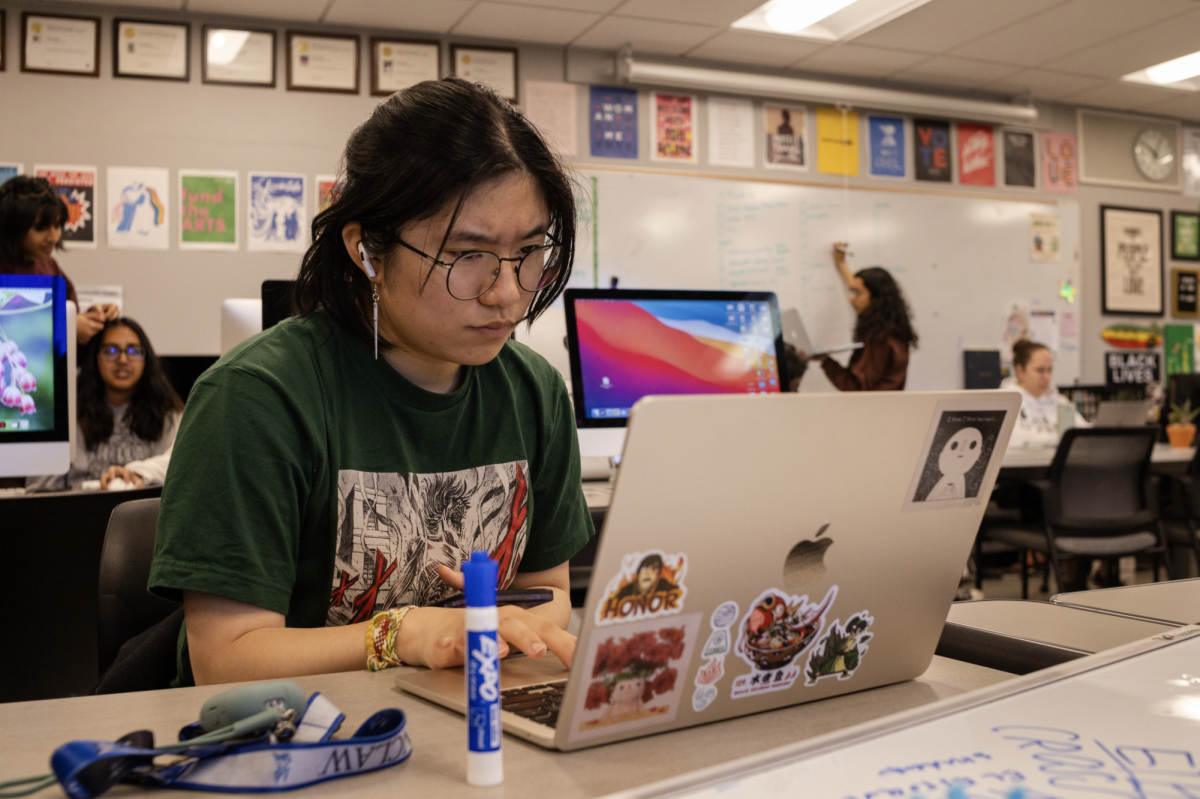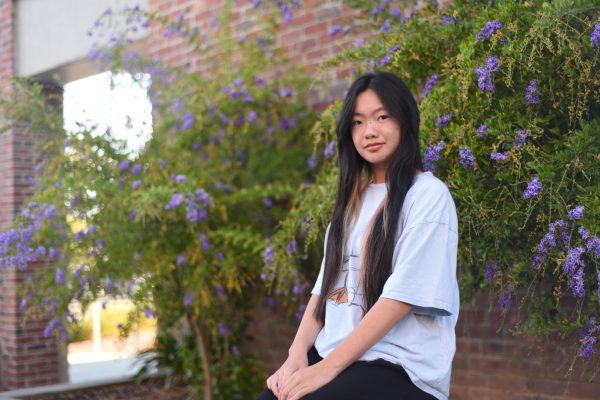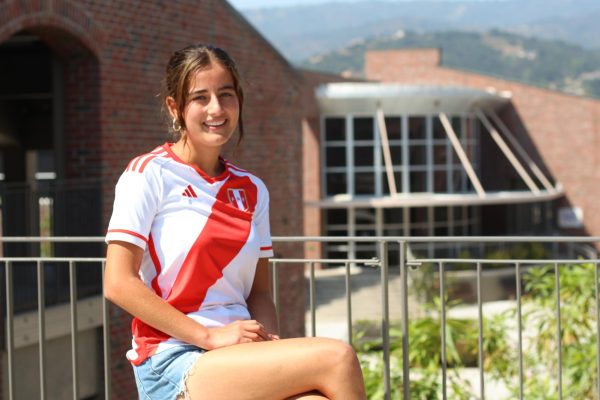The clicking of keys and mouse pads fills room A111, along with the smell of food and the sound of laughter. On a Monday night, junior Ananya Chaudhary, an Arts and Entertainment editor for El Estoque, works diligently on her page design for her print story, editing the graphics and aesthetic of the page and sending it through multiple rounds of edits. Amid her own work, she often stops to help other staff writers fix their pages. For many students including Chaudhary, production nights are the highlight of the Journalism course, representing the community behind the publication and the process behind the magazine.
Each five-week cycle, MVHS’ newsmagazine publication El Estoque, specifically developed by students enrolled in the Journalism course, publishes a magazine containing content that spans five sections: News, Features, Opinion, Arts and Entertainment and Sports. Entering each cycle, El Estoque writers develop their pitches, which are potential topics and themes for stories.
 “We generally expect people to come in with pitches,” Chaudhary said. “On the day we have class, at the beginning of a cycle, we start delving more into what we specifically want to focus on. Everyone has the freedom to pitch whatever they want. It’s never assigned. It’s all their choice.”
“We generally expect people to come in with pitches,” Chaudhary said. “On the day we have class, at the beginning of a cycle, we start delving more into what we specifically want to focus on. Everyone has the freedom to pitch whatever they want. It’s never assigned. It’s all their choice.”
Chaudhary acknowledges the importance of pitching, as ideal stories should follow important values such as timeliness, proximity and human impact. Chaudhary often looks towards pop culture to create a pitch relevant to Arts and Entertainment.
“There’s always some sort of media being produced, whether it’s current art scandals, music scandals with celebrities, or just new movies coming out,” Chaudhary said. “That’s typically the source of inspiration for Arts and Entertainment pitches. We try to make our pitches relevant and based on what people are interested in because people aren’t going to read things they’re not interested in.”
Sophomore Benjamin Zhang, a staff writer who is currently in the Sports section, often starts with a vague pitch that expresses a broad idea. He notes that he usually comes up with three to four pitches every cycle and discusses them with the rest of his section to narrow his angle and finalize his idea.
“When it’s just yourself thinking, you might end up in a loop where you keep going back to the same ideas,” Zhang said. “But when other people are helping to contribute to that and give you feedback, it just makes the process a lot easier.”
Editor-in-Chief and senior Taryn Lam notices the value of collaborating during the pitching process. Notably, she says discussing pitches one-on-one with each journalist helps them approach every story with a nuanced focus.
“You can tell pretty early on if an angle is stronger or weaker,” Lam said. “If you notice right away that the angle is weaker, then you can work with the journalists and guide them into going more in-depth and building a stronger angle. The main thing that we try to do is to address the issue early on, so that doesn’t become a problem later on.”
Every two weeks, all editors and El Estoque’s two advisers, Julia Satterthwaite and Vennessa Nava, hold a meeting to review each section’s progress, identify and resolve quality and ethics issues and develop an action plan for any stories that are behind on deadlines.
“It is a student-run class,” Lam said. “I feel like I didn’t really realize it before. The managing team really does have a big role in how El Estoque runs. Something you might not see in other classes is that we plan lessons, so if someone wants to teach a lesson about media literacy, they’ll sign up for that. We always discuss things we might be unsure about, talk it out and discuss what the best decision would be going forward.”
However, pitching is only the first step. Before a story is ready to be published, it needs to go through a series of copy edits. The edits include angle, section, copy 1, copy 2, copy 3 and then proof. Each round of edits follows a specific deadline, and as the deadlines are typically within a few days of each other, Zhang believes that it’s crucial to avoid procrastinating.
“It was hard at the beginning to meet the deadlines,” Zhang said. “Obviously, the final deadline for the magazine is a lot easier because you have that sense of urgency. So I started earlier and really treated each deadline as a big final deadline because if you do that then you won’t have to end up rushing everything.”
 However, there is more to publishing a magazine than writing and editing the stories. Chaudhary also highlights the heavy task of developing visuals like photos or graphics, designing each page and making sure marriage of elements (MOE) meetings are done on time.
However, there is more to publishing a magazine than writing and editing the stories. Chaudhary also highlights the heavy task of developing visuals like photos or graphics, designing each page and making sure marriage of elements (MOE) meetings are done on time.
“We hold MOE meetings which ensures we come up with a page design that accurately represents the things that you’re writing about in the article,” Chaudhary said. “Just because it looks nice doesn’t mean it compliments your article. That’s something we focus on, as well as having a Plan B in case something doesn’t work out.”
Zhang notes that people who aren’t part of El Estoque are often unaware of how much time and effort goes into creating the magazine. He mentions that, even though he doesn’t have the same responsibilities as an editor, he still takes pride in the overall product.
“I think the biggest misconception is that we just write the story in one go and then publish it,” Zhang said. “But in reality, it takes a lot of people and a lot of rounds for a story to be good and for it to be published. All of the edits and design might seem like a very strenuous process, but it’s really fun.”












